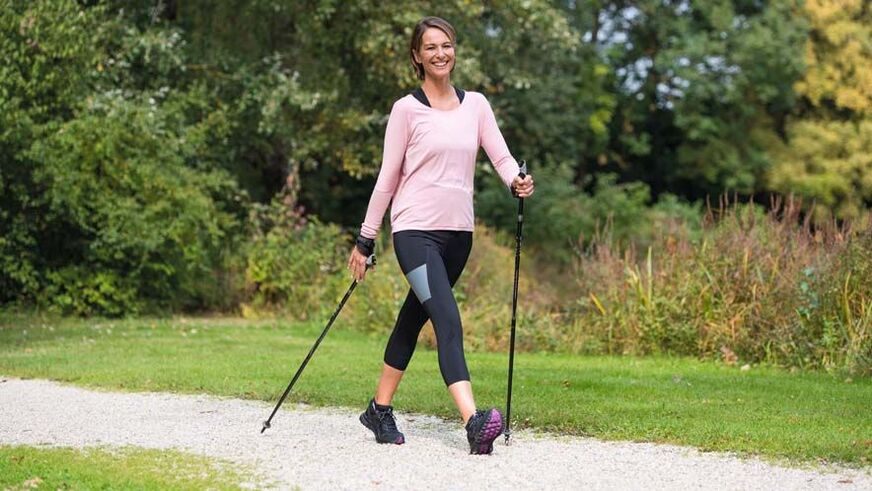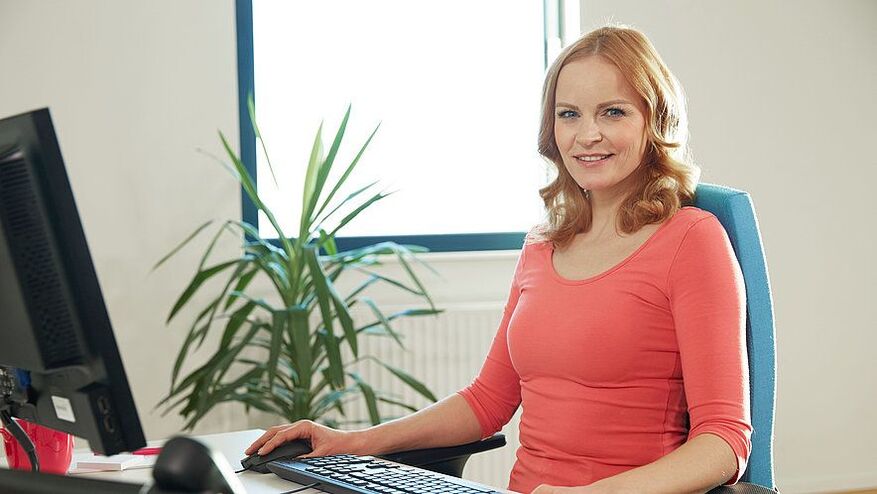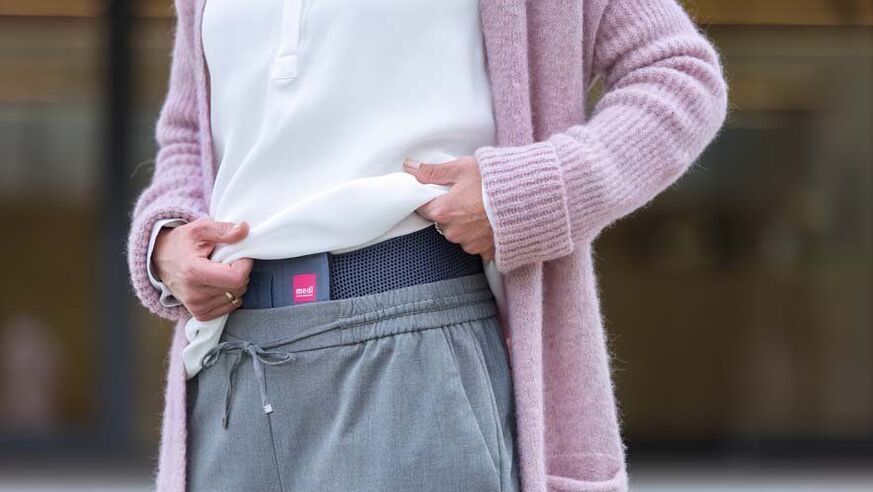Back pain is one of the most common complaints of diseases of people of working age, the elderly and senile. The human spine bears almost the entire weight of a person. It consists of 33-34 vertebrae, which are connected by intervertebral discs. Thanks to this connection, the vertebrae can move relative to each other. The sacrum and coccyx are special parts of the spine. The sacrum consists of five fused vertebrae and the coccyx is a rudimentary part of the spine that does not perform a support function.
Pain can develop in one or all three parts of the spine. Most often, pain occurs in the cervical, thoracic and lumbar spine. Pain can be caused by disease and injury of the discs (disc protrusion, herniated disc) and intervertebral joints (facet joint arthrosis) or other conditions. The number of people with back pain has increased dramatically over the past few years and decades, making this complaint the most common in the world.
Types of back pain
Acute back pain lasts up to six weeks. If it lasts up to 12 weeks, it is called subacute. Pain that persists after 12 weeks is called chronic pain.
Depending on the definition of some causes of pain, there are:
- non-specific back pain;
- specific back pain.
Specific back pain
If the exact cause of the pain is known, it is referred to as specific back pain.
Examples of specific pain include trauma, disc injuries, inflammation of the intervertebral joints (arthrosis of the facets).
Nonspecific back pain
In some cases, back pain is classified as non-specific because the exact cause cannot be pinpointed.
Nonspecific back pain can occur with poor posture or lack of physical activity.
Symptoms and complaints
Almost everyone has experienced "low back pain" or mild back pain. "Back again! " - a very common phrase, because the back is subjected to significant stress every day. Hours spent sitting in the office, slouching in front of the computer, lifting and carrying heavy objects, or working in the garden in one position - mild back pain is an integral part of everyday life.
Back pain must be taken seriously. The reason for going to the doctor should be situations where the pain does not go away for several days, when certain movements intensify the pain or when the pain radiates to the limb (s), and especially when there is a feeling of numbness.
Shooting pains in the lower limbs are characteristic of compression of the spinal cord or its roots (for example, a herniated disc). The pain inherent in arthritic changes in the intervertebral joints is usually dull and local. The nature and intensity of the pain can vary greatly from person to person. Only a doctor can, on the basis of complaints and symptoms, prescribe the necessary examination and treatment appropriate to the situation. Depending on the situation, the doctor may prescribe physiotherapy, therapeutic exercises or schedule surgery. With conservative treatment and during the postoperative rehabilitation period, it is very important to regularly do therapeutic exercises, because they train the muscles, stabilize the spine and reduce pain.
The most common causes of back pain
The spine or vertebral column is a complex structure consisting of vertebrae, intervertebral discs and ligaments. Pain occurs when the interaction of these structures is disturbed. Typical reasons are:

Stress causes back pain
Predominantly sedentary work and lack of physical activity in daily life lead to chronic tension in the back muscles and pain in the spine in the absence of any disease.
The intervertebral discs act as biological shock absorbers and separate the vertebral bodies from each other. With a decrease in the elasticity of the disc, it begins to swell in the lumen of the spinal canal (the so-called prolapse), and its height decreases. The latter negatively affects the work of the intervertebral joints, because their biomechanics is disrupted.
If the protruding part of the intervertebral disc presses on the sensitive nerve fibers, various sensory disturbances can occur in the area of innervation of the compressed nerve: pain, tingling, numbness, creeping, etc. If the motor nerve fibers responsible for the work of the muscles are compressed, the function of the innervated muscle is disrupted, leading to paralysis.
Posture disorders and heavy lifting can lead to disruption of the anatomical relationships of the structures of the spine. In some cases, this leads to the so-called blockage of the intervertebral joints, usually accompanied by severe pain. When the intervertebral joints are blocked, the back muscles are in a state of painful spasm. Therefore, pain occurs not only in the blocked joint, but in the muscles. This drastically reduces the physical activity of the patients up to the inability to walk. When intervertebral joints are locked, effective stabilization of the spine with medi braces helps to eliminate muscle spasm, localize pain and increase motor activity.
As we age, our spine gradually changes its structure, which is described by the general term "degenerative changes". In this case, the word "degenerative" means irreversible changes due to aging. Despite the irreversibility of the process, the use of orthoses helps to alleviate and improve the patient's condition.
Degenerative changes in the intervertebral disc imply a violation of its elasticity, a decrease in height and a swelling in the lumen of the spinal canal. A decrease in disc height causes increased stress on the intervertebral joints (facets).
The position of the spine, including the lumbar spine, is stabilized by the work of the muscles. The muscles of the back, the abdominal muscles and the muscles of the lateral abdominal wall are involved in maintaining posture. The work of the muscles makes the load on the intervertebral discs more uniform and prevents excessive stretching of the tendon-ligament apparatus. Any pain syndromes negatively affect the functioning of the muscles, which can lead to local hypertonicity or, conversely, local weakness. As a result, the stabilization of the spine is impaired. This, in turn, causes an increase in the hypertonicity of some muscles, eg. a vicious pathological circle is formed.
Medical gymnastics helps to break the pathological circle, which allows you to restore the symmetry of the tone of the muscles of the trunk.
The cause of back pain can be located not only in the trunk. For example, the biomechanics of abnormal gait can also cause back pain. This is mainly due to the loss of the cushioning function of the foot in the event of certain deformations. Another reason could be the difference in the length of the limbs, which exceeds normal values.
The good news: In many cases, back pain goes away after a few weeks. Nonspecific pain is successfully treated with the help of mobilization techniques (manual therapy) and medications. With such pain, physical therapy exercises are very effective.
Prophylaxis
Each of us can reduce back strain and prevent pain.

Exercises that are good for your back.
There are strength training exercises that you can easily integrate into your daily routine. This complex was developed in collaboration with a specialist in physiotherapy exercises.
- Regular Exercise: Three 45-minute sessions a week will help you improve your well-being, activate your immune system and maintain muscle tone. The optimal sports for the back are swimming and walking.
- Balanced nutrition: Proper nutrition is the prevention of excess weight, which is an additional burden on the back.
- Lift Weights Properly: When lifting weights, you need to squat down and lift the load by extending your legs, not your back muscles.
- Carry Weights Properly: Carry heavy objects as close to your body as possibleDon't carry heavy things in one hand.
- Be physically active: Sedentary workers should take every opportunity to increase their physical activity, such as climbing stairs better, getting up more often during the day, walking while talking on the phone, and taking a walk during lunch time.
Ergonomic workplace

Back pain often occurs in the workplace. Prolonged sitting in the wrong position can lead to chronic muscle fatigue and subsequent pain. In addition, back pain is often caused by work associated with frequent bending and lifting.
Back pain treatment
There are many treatments for back pain. First of all, the attending physician chooses between conservative and surgical treatment. The latter is used when conservative treatment is ineffective and in a number of other cases.

Physiotherapy and massage
Complexes of corrective gymnastics and special exercises for the back should be performed under the supervision of a doctor or a physiotherapy instructor until the technique of performing each exercise is mastered. Such series of exercises are developed to train the strength of the trunk muscles. The doctor chooses the exercises that are most suitable for the patient. Massage and physiotherapy may be prescribed to reduce the intensity of the pain.
Pharmacological treatment
Drug therapy is prescribed to reduce pain and inflammation in the acute period. Taking pain relievers helps eliminate the uncomfortable protective position the patient takes to relieve pain. Medicines should only be taken as directed by a doctor.
Exercises for the back
Strong trunk muscles protect the spine from negative stress, reduce the likelihood of spasms and pain. To prevent back pain, you should regularly do exercises to train your back muscles. Swimming or walking is also helpful.
The exercise series combines strength exercises and stretching exercises and is designed for 20 minutes. The optimal frequency of exercise is 2-3 times a week. Important: Consult your doctor before exercising.
Orthopedic products for the spine
Medical appliances and spinal appliances are designed to treat pain and muscle spasm. Modern bandages and corsets effectively fight pain and increase physical activity. Depending on the diagnosis, devices with higher or lower potential are used to stabilize the lumbar spine.
Lumbar braces and corsets with higher height and stiffer stabilizing elements stabilize and better support the spine in the desired position. The ability to move without pain and participate in social life eliminates the apparent bulk of even the most rigid corsets.
Fashionable orthosis - a practical guide

Can a spine orthosis be stylish and elegant? You can get the answer by reading our brochure. Learn how to take care of your health and dress appropriately at the same time.

Companies produce a large number of orthopedic devices for the treatment of a wide variety of diseases. Hundreds of thousands of people around the world note the high efficacy of products for the treatment of back pain. At the same time, patients emphasize the high comfort and durability of the products. Thanks to the special design, all lumbar braces are easy to put on. Additional comfort in the sitting position is also provided by a design solution: a special pattern in the area of the inguinal folds.
Stabilization of the lumbar spine with medium orthopedic products is not accompanied by muscle weakness, much less atrophy. As already mentioned, the ability to move without pain increases the physical activity of patients. Furthermore, orthopedic support is aimed at eliminating excessive and / or painful mobility and not immobilization, which is the reason for the functional inactivity of the muscles and their weakening.























